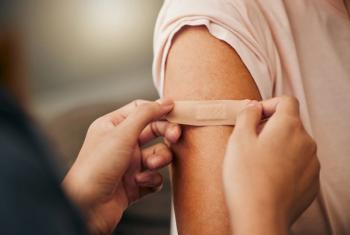
A festival of Clinical Tips
Lighten the winter doldrums with a selection of tried-and-true ideas to use in your practice—including a CLIA-waived test for detecting alien life!
Illuminating approach to toe-walking A 5-year-old patient in my practice wore orthotics for 18 months to correct toe-walking-without success. Then, his mother bought him a pair of "light-up" sneakers for his birthday. For the lights to work, the child had to come down on his heel with each step. He was so motivated to get his sneakers to light up that he stopped walking on his toes. At first, the boy walked normally only when wearing sneakers. After he he had worn them for two months, however, his gait improved markedly, and now he toe-walks only 10% of the time.
Artfully dodging blood-test fears Between 5 and 12 years of age, children often ask, at the beginning of their annual physical exam, whether they need a blood test. I've learned to dodge this question because, if you tell a child that a blood count is in her immediate future, she asks over and over when it's going to happen and whether it will hurt. My dodge is simply to tell the child that I won't know if she needs a blood test until the end of the visit.
Once the moment of truth arrives, I use a simple technique to distract the child. After I tell her that she will need a finger poke, I quickly add that the reason for the test is to find out if she is an alien. I then take out a test tube filled with green or purple "blood" and mention that someone from outer space came in for a physical the previous week. This usually gets the child's mind off the poke and onto whether I'm making up the alien thing and what's really in the test tube (food coloring and water-an off-label use). The technique doesn't always work, but we have a lot of fun when it does.
A reason-and an easy way-to treat labial adhesions Labial adhesions often develop in girls during the first three years of life. The advice in pediatric texts is to ignore the condition because it is benign and will resolve when the child's tissues become estrogenized during puberty. What the books fail to mention is that labial adhesions complicate the diagnosis of urinary tract infection in young children. Older girls can provide a clean-catch specimen, but infants and toddlers usually need to be catheterized when they develop symptoms of a UTI. Labial adhesions often obstruct the view of the urinary meatus, making it difficult to insert a catheter.
Although adhesions can be separated in acute situations, doing so is traumatic for parents and child. As an alternative, I recommend applying a small amount of estrogen cream (off-label use) twice a day for two weeks to labial tissues until the adhesion resolves. Once tissues open up, I instruct parents to apply K-Y jelly for an additional week to prevent the labia minora from reattaching. Some children subsequently develop recurrent adhesions, but they are as easy to treat the second time as the first. I have managed scores of children with this approach, and none have developed complications or secondary sexual characteristics as a consequence of applying estrogen to vaginal tissue.
Newsletter
Access practical, evidence-based guidance to support better care for our youngest patients. Join our email list for the latest clinical updates.











